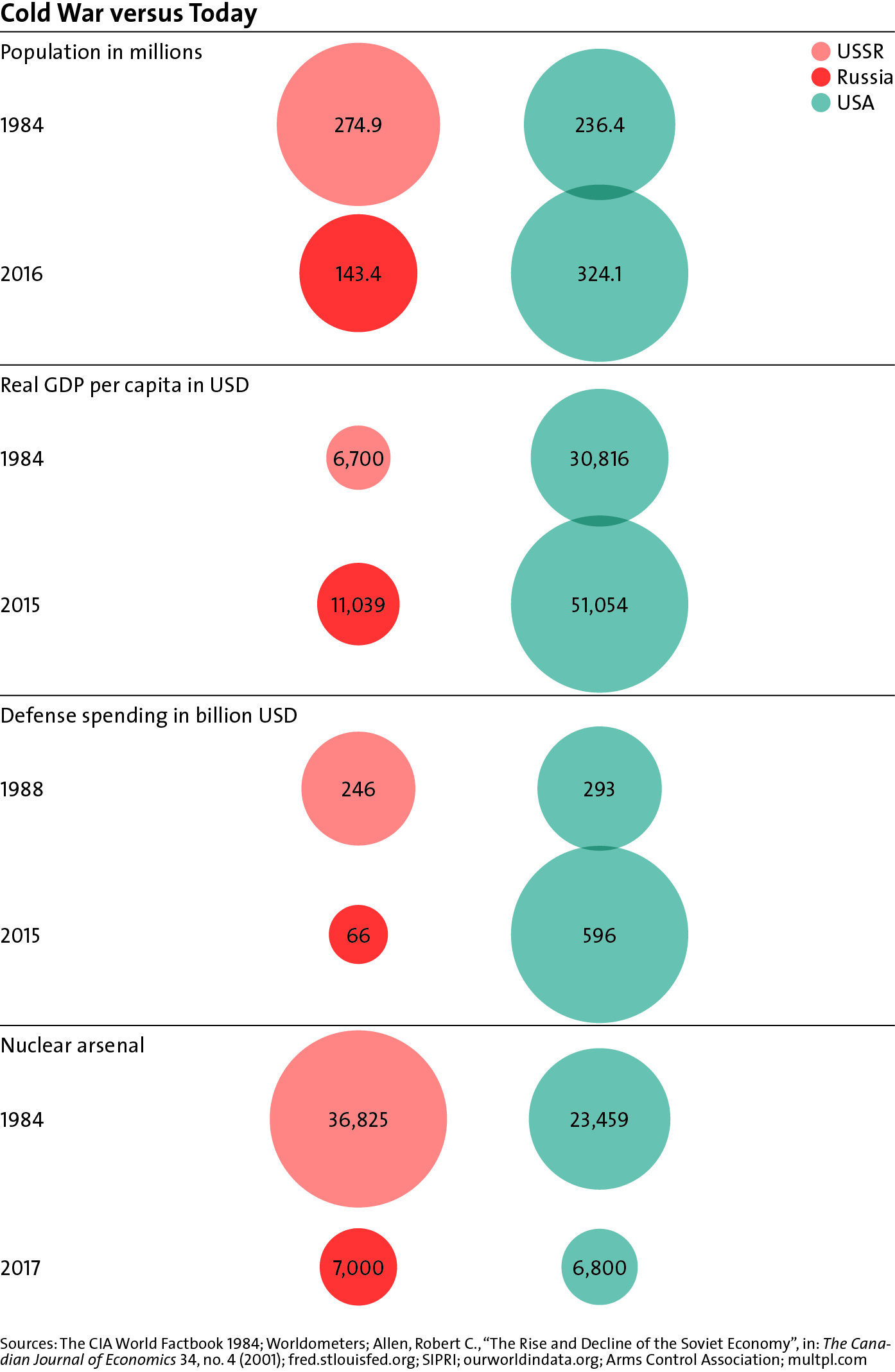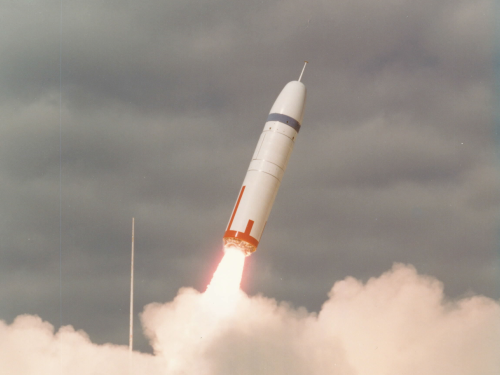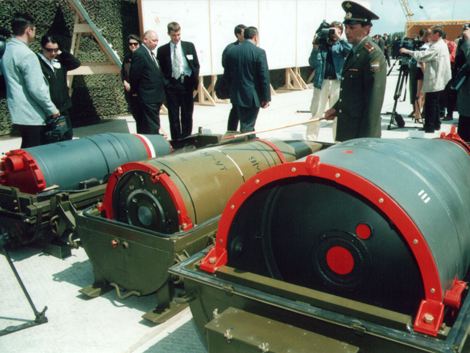This graphic shows how the USSR compared to the US in terms of population, real GDP per capita (USD), defense spending (in billion USD) and nuclear weapons in the 1980s, as well as how the US compares to Russia in these key areas today. For an analysis of how different interpretations of the recent past still affect West-Russia relations and what is needed to rebuild trust, see Christian Nünlist’s chapter in Strategic Trends 2017 here. For more CSS charts and graphics, click here.

MOSCOW – In a recent speech in Berlin, US President Barack Obama reaffirmed his commitment to nuclear disarmament and proposed steps toward achieving that goal. But Russia has made clear that it does not plan to pursue further reductions to its nuclear arsenal any time soon.
In the speech – delivered nearly 50 years after President John F. Kennedy addressed the then-divided city, highlighting the value of arms control between adversaries – Obama announced that the United States is prepared to cut its nuclear arsenal by up to one-third. He also proposed major reductions in the number of tactical nuclear weapons (TNWs) deployed in Europe. Moreover, he called upon the international community to renew its efforts to prevent Iran and North Korea from developing nuclear weapons; to bring theComprehensive Nuclear-Test-Ban Treaty and the proposed Fissile Material Cut-Off Treaty into force; and to make nuclear energy safer.







